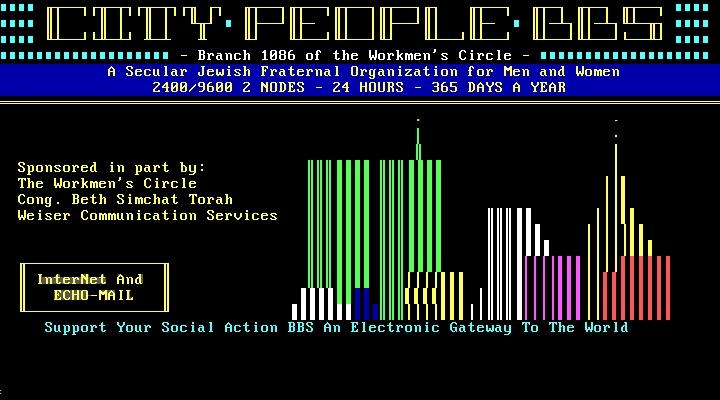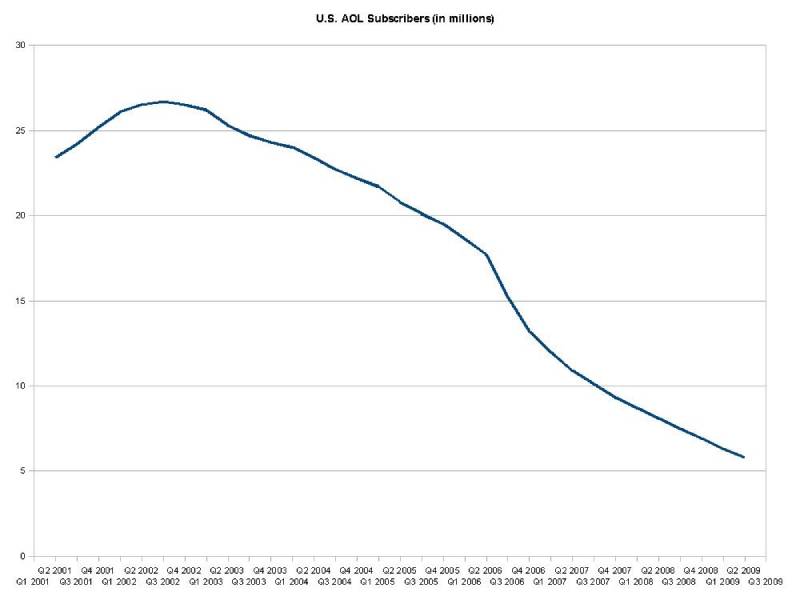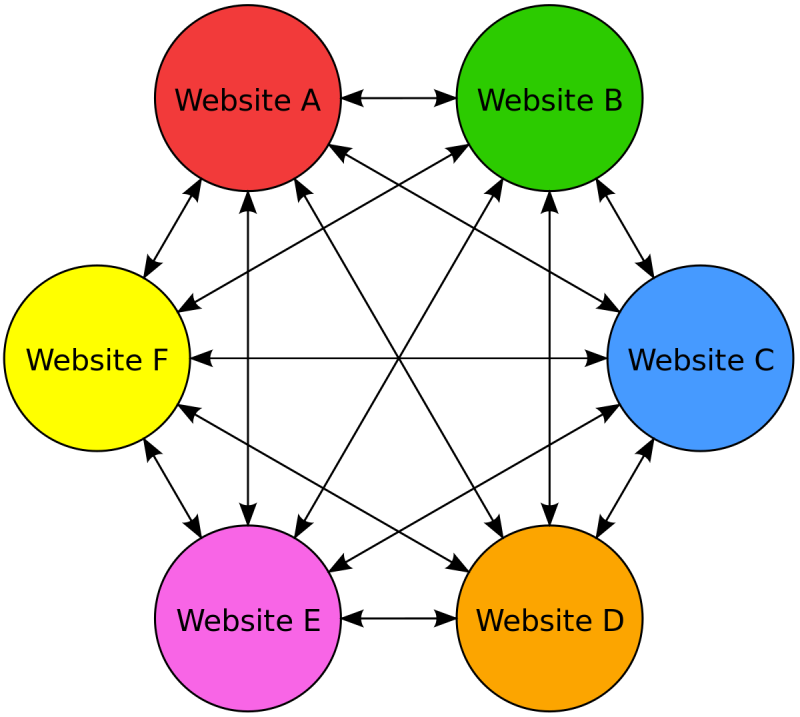The Past, Present & Future of SEO Best Practices
The official definition of SEO, according to Google, is “the process of maximizing the number of visitors to a particular website by ensuring that the site appears high on the list of results returned by a search engine.”
In order to define the current state of SEO and then to predict how it will change, it’s first necessary to break the term down into more specific areas of focus. Then we can analyze how each area has evolved before finally attempting to predict what future human behavior and technology the masses will adopt.
If that sounds like a lot, it is.
The truth is, SEO is a complex process that falls under the umbrella of many professions, and it requires expertise in myriad areas, including website servers, user experience (UX), graphic design, computer programming, information architecture, content creation (text, video, and audio), content marketing, branding, conversion testing, Internet security, and analytics.
Each subject area above has dedicated professionals with job titles and responsibilities that focus exclusively on those individual subject matters.
It’s important to note, however, that an SEO practitioner who lacks a fundamental understanding of any of these subjects will be ineffective at best and a scam artist at worst. As such, it can be exciting to find a true SEO expert who has mastered each profession, can showcase proven results, and can preemptively position a business to be successful in 2020 and beyond.
It’s important to note, however, that an SEO practitioner who lacks a fundamental understanding of any of these subjects will be ineffective at best and a scam artist at worst. As such, it can be exciting to find a true SEO expert who has mastered each profession, can showcase proven results, and can preemptively position a business to be successful in 2020 and beyond.
Looking for SEO Support? Here Are the Ways We Can Help
Quick-Start Solutions
Courses
24/7 Coaching/Consulting
Free 30-Day Access!
Agency SEO Services for SMB to Enterprise
SEO Audits to Gain Thorough Visibility into Your Situation
Free Site Scan with Quick Report
In this blog series, we will look at twelve key issues that define and predict the trajectory of search engine optimization, and we will do so by evaluating the history, present state, and future possibilities for each core area of SEO.
- An overview of SEO, its history, and how the need for it is growing.
- SEO site server expertise and how it adapts to changing technology.
- User experience, site design, and usability (from an SEO perspective).
- How graphics affect site optimization and how graphics technology changes SEO.
- Efficient site coding and cross-browser, cross-platform optimization.
- Website structure and navigation layout.
- Content creation and optimization in a mobile environment.
- Content marketing trends and predictions.
- The ever-growing importance of building trust signals.
- Conversion testing, optimization, and implementation.
- The critical consideration of Internet and website security.
- The importance of analytics and SEO flow.
1. The History of SEO and How the Need for SEO Is Growing
At its heart, SEO has always been about driving more traffic to a particular website over competing websites. As long as there are websites competing for users’ attention, there will be an ever-growing need for the unique tactics of SEO.
With so many areas of expertise that make up an SEO practitioner’s skill set, it’s easy to forget that in the late 80s and early 90s, websites were often just text files located on computers you had to dial in to, and competing websites were almost nonexistent. (That’s right. Not that long ago, users had to have dial-up modems to attach their computers to their phone systems. Click here to travel back in time and to hear how early users connected.)
At this stage, search engines did not exist, and driving traffic was done by word of mouth and reciprocal linking to other IP addresses.
Bulletin board system (BBS) administrators (the first SEO practitioners) often had to place ads in local newspapers and computer magazines. The main pages of their bulletin boards had to match these ads, and as different systems competed for the limited traffic, visitor expectations grew, and “optimization” began.
These initial bulletin boards allowed users to play games together in the most archaic way. A user would make a move or a game decision and then wait twenty-four hours for the server batch program to process everyone’s turn. Only then would players be allowed to move again.
Gaming, however, was only one facet of these early online communities. Most people found value in sharing information via systems similar to modern-day forums.
It wasn’t until America Online came out, though, and started mailing CDs to as many people as they could that online interactions became mainstream and, as a result, competitive.
America Online was the first organization to leverage “keywords” as a method for Internet users to find relevant information. As the demand for keyword real estate grew, AOL saw the profit potential and began charging companies to own keyword groups.
America Online positioned itself well as the only viable web portal and email system and quickly grew to over 27 million subscribers. As the Internet became increasingly competitive, though, AOL was unable to sustain its industry lead.
At the height of AOL’s dominance, SEO was fully under way, and keyword stuffing (the process of placing as many exact keywords as possible into key areas of HTML pages) became increasingly effective.
As their competition grew and sites like AltaVista, Excite, Lycos, and Ask Jeeves rose in market share, AOL began to function as a search engine. One of AOL’s biggest competitors, Yahoo, was created in the mid-90s as well, and it’s one of the few of these early search engines still in existence.
As people began to learn how to manipulate both search engines and their websites better, SEO grew into a full-fledged profession, and the web grew in reach, complexity, and competitiveness.
Our friends at EvolutionoftheWeb.com have a really cool interactive map showing the history of the web.
Through this map, you can visualize how complex the Internet has become, as well as how competitive it is now compared to the past.
To give you an idea, as of January 2020, there were over 1.74 billion websites and over 4.4 billion individual Internet users.
With the development of Starlink (a global satellite Internet service) in a few years, every single person on the planet will be able to access the Internet.
The world population is expected to reach 9.8 billion in 2050 and 11.2 billion in 2100. With so many competing websites covering almost every single topic known to humanity, the chances of being listed in the top search results are ever diminishing.
Again, SEO used to be limited to keyword stuffing and mass-producing links to and from websites. In that less complex environment, it wasn’t long before SEO practitioners began to abuse the system, and search engines had to learn to counter their efforts.
The following tactics are just a few methods that were highly effective at some point but today lead to penalties in rankings (or worse) for your website.
Link directories, often fully automated.
Link directories were an early and easy way to build links. Often, there was no “theming” or organization involved, and so long as you paid a fee, the directory would add your website link.
It did not take long for this practice to become mainstream, and as long as you invested a few thousand dollars in directory fees, you could be assured a competitive advantage over other websites.
Now, participating in low-quality and automated directories can send a signal to search engines that you are attempting to link spam your way into search rankings.
Exact domain match URL names.
When search engines began making better use of keywords and context, SEO practitioners figured out that having a keyword (specifically a long-tail keyword) in the domain name helped it rank better.
Before long, SEO practitioners were creating new domains like “my-fancy-keyword-here.com” in an attempt to gain an advantage over other websites. While having a search term in your domain name can still help, doing so in an obvious way will probably be devalued by search engines.
Link wheels and reciprocal linking abuse.
Shortly after the volume of inbound links became a ranking signal, SEO practitioners learned they could trade links, and assuming each was for a different keyword or website, both received value from those links. People were soon trading links left and right, and there was very little rhyme or reason to these trades.
When search engines devalued reciprocal linking abuse, SEO practitioners adapted accordingly and began trading links in an A to B to C fashion.
Keyword meta stuffing.
Similar to stuffing keywords in a domain name, placing more than one keyword set in the “keyword” tag of a page’s HTML was initially very effective at assisting in rankings.
This, too, was abused by SEO practitioners and is now consequently completely ignored as a ranking factor.
Indiscriminate guest blog posting.
When SEO practitioners found the above efforts were no longer effective and often resulted in being banned from the search engines, they learned to hide their linking practices by placing links in blog posts from other websites.
While guest blog posting is still a valid and encouraged method of building links, early SEO practitioners did not care where those links came from. In some cases, you would find links to a roofing company, for example, on a website about gambling addiction. The relevance of the link was not important as long as the SEO practitioner obtained the link. Now, relevance is critical in any guest posting initiative.
Paid links and purchasing links.
Facing setback after setback in their efforts to manipulate search engines, SEO practitioners decided to build links by stealth. By contacting webmasters directly via phone or email, they could literally bribe those webmasters to place links for them.
This practice was almost undetectable by search engines, and to this day, it can result in positive ranking growth. Be warned, though. This is against the search engine terms of service, and if you are caught, your site will be penalized.
Exact match anchor text.
As search engines adapted to the ever-growing attempts to manipulate rankings, the wording and frequency of link text became factors that were used to determine the quality of a link. If a link was built with the exact keyword used in the title of a page, it was seen as more relevant and added additional value.
However, when 90 percent of a website’s links were using the same exact words to the same exact pages, search engines learned it was becoming an abusive practice. Search engines now look for the quality, frequency, and randomness of all inbound links.
A page for each keyword variation.
Another method of attempting to gain additional keyword rankings was to create a unique page on the website for every variation of a keyword. For example, you might have a page about blue widgets, another about deep-blue widgets, and another about deep-deep-blue widgets. The content on each page was contextually the same, but using meta information in the HTML coding, SEO practitioners were able to rank for many keywords at once. This practice is no longer effective, and search engines contextually analyze your content to determine which pages add value to the reader.
The list goes on and on. The important point is that search engines will always adapt to prevent misuse and to increase the chance of users finding what they want.
The image below shows a diagram of a “link wheel,” or “link farm.” While very effective for SEO at one point, this type of link building should be avoided at all costs today. Otherwise, your website runs the risk of being penalized.
The Current State of SEO in 2020
Once SEO practitioners learned about an easy-to-scale, effective tactic, everyone, much like during the early gold rushes, hurried to do the same thing.
Also like the early gold rushes, though, the days of getting rich easily have long gone. The increased competition and complexity of the system mean there are no get-rich-quick tactics left for SEO practitioners to leverage.
In fact, the only truly effective tactic for SEO practitioners today is to provide better, more useful content at a faster rate than everyone else and then to market that content in a legitimate and traditional way.
SEO in 2020: What Works Now and Why
Title Tag Optimization:
Title tags are the quickest and most efficient method of letting search engines and users understand what a web page is about. A well-optimized title tag can greatly influence a web page’s ranking position in the search engines and is the first step at matching searcher intent.
Meta Description Tags:
A meta description tag is essentially a summary of a web page’s content. It’s an HTML attribute that lets search engines and users alike quickly and easily assess what information a web page contains. Search engines, including Google, will often display a meta description in the search results, where users can read it and assess if the page contains information relevant to their queries.
Because search engines limit how much text they will display per meta description, it’s best to keep it between 50 and 160 characters. This ensures it’s long enough to be descriptive and useful to a reader but not so long it gets cut off. Remember, the goal of a meta description tag is to provide value and information to people deciding whether to click on your web page. In this way, think of it as your chance to advertise or to market your page and to encourage clicks.
For the best results, write meta description tags in a natural tone with wording that entices readers to click. Avoid overtly spammy language, and naturally incorporate the keywords that page intends to target. Always ensure the copy is unique and never copy and pasted from any other web page or meta description tag. In terms of formatting, always omit double quotation marks. Google cuts off a description at the quotation mark, so it’s best to avoid them altogether. If quotation marks are essential to your meta description, use the HTML entity to bypass this unintentional truncation.
Note, meta description tags, as well as meta keywords, do not factor into Google’s ranking algorithm. (This was announced in September 2009.) That being said, well-crafted meta description tags can increase the click-through rate of a page, which can boost that page’s ability to rank.
Myths and Misinformation of SEO in 2020
With something as complex as SEO, it’s not surprising there’s so much misinformation going around. Further complicating the matter, the best SEO practices are constantly changing and evolving, so what was true or beneficial in the past isn’t necessarily so today. Here are just a few myths or pieces of misinformation about present-day SEO practices:
- Myth: Sitemaps help your website rank well.
Fact: Sitemaps make your pages more crawlable to search engines, but they do not directly affect your actual rankings.
- Myth: Meta tags don’t matter.
Fact: Like a sitemap, meta tags won’t directly help your page rank, but they make your page more attractive (clickable) to readers, which can indirectly boost ranking. In the current SEO landscape, meta tags are still worth the trouble.
- Myth: Google will automatically find your new content and index it.
Fact: Yes, your new content might get crawled and indexed without you doing anything special, but it can take days. To speed up the process and to help promote indexing, a sitemap plugin will generate a new sitemap and send it to the major engines every time fresh content is published. You can also post a link to the new content via social media accounts, and you can use a free service like Pingomatic to notify web services of the content.
- Myth: SEO agencies can guarantee quick rankings.
Fact: SEO today is too complex and involved for anyone to promise top rankings overnight. SEO agencies certainly have their uses, especially when it comes to keyword analysis, competitive auditing, and more, but magically and speedily getting you to the first page of Google isn’t realistic. SEO is a long game, and factors like authority links and aged domains can’t be faked.
The Importance of SEO in 2020 on the Web in the Future
Key Takeaways—History of SEO:
- SEO is a cover-all term for all the tactics that maximize the number of visitors to a particular website through high search results returned by a search engine.
- SEO is a complex process that involves many factors, including everything from graphic design to text, video, and audio content creation to analytics.
- As the Internet evolved, more and more websites were created, and competition for ranking grew. Successful SEO practices had to constantly evolve in reaction to these changes in the online landscape.
Key Takeaways—Current State of SEO in 2020:
- While it used to be relatively easy to earn a spot on the first page of major search engine results, SEO today has become too complex to earn easy, overnight rankings.
- Ranking high today derives from creating lots of genuinely relevant, useful, detailed content that’s then marketed well.
- Many tactics today contribute to successful SEO, including title tag optimization and meta description tags.
- As SEO becomes more complex every year, lots of misinformation and myths continue to confuse and to mislead people. Enjoying success with SEO requires continually staying up to date on the current state of SEO, even as it changes and evolves.
Key Takeaways—Future Predictions of SEO:
- The number of websites and Internet users is growing, and the Internet will soon touch every single human on the planet.
- The number of websites for each topic and industry is increasing exponentially, leading to increased competition as well.
- The need for someone (an SEO practitioner) to help a website compete against ever-growing competition will only increase.
The practice of optimizing a website to rank higher for relevant search terms (SEO) is here to stay, and it’s growing ever more complex and competitive with each passing year.






